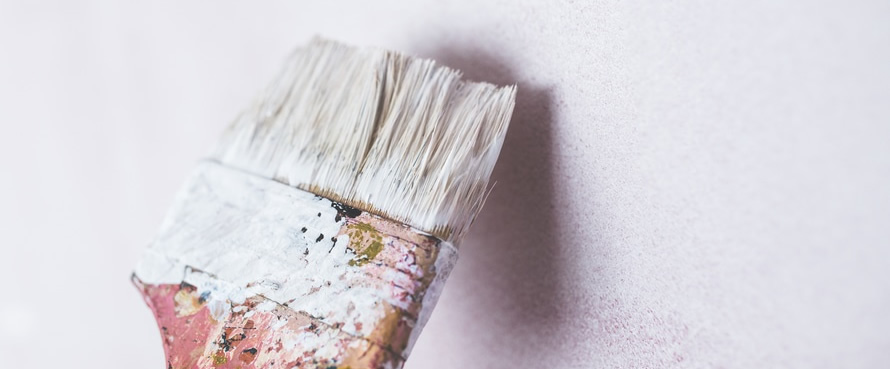‘Paint Touch Up’ – This is a very common term used to describe the recoating of small and localized areas of a recently painted surface. This repairs minor damage or defects that may have happened in the initial coat or shortly after the painting process was completed.
Whilst homeowners and indeed painters and decorators will place considerable importance on the quality of a blemish-free surface. It’s not always possible to achieve an invisible touch-up. Smaller blemishes that may still be present will be highlighted or indeed, have slight variations across the surface that can be accentuated when shadows are cast from either natural or artificial light sources which will hit the painted surface as viewed from low or acute angles.
The main issues that are associated with touch-ups of wall and ceiling paints form a perspective as follows. The most evident defence witness when the paint is viewed at lower angles, with head-on directional lighting. This can be seen usually when looking down a hallway with glancing light shining down from the ceiling-mounted light
Gloss Difference
The gloss difference is quite often related to the difference in film build. If the film thickness of the original paint was insufficient to fully seal the substrate then its sheen level is quite likely to be much flatter than normal. The additional paint that is applied during the touch-up phase can deliver a correct but slightly more intense sheen vel.
Surface texture
The difference in surface texture between the original and touch-up paint is often the source of touch-up issues. This can be down to different application methods and techniques that can produce an ever so slightly different surface texture. The degree of the roller stipple can vary in appreciation between the roller and the brush marks may indeed still be evident. This is especially true under critical lighting conditions.
Colour
The colour difference between the original coat and the touch-up can indeed present something of an issue. This can be the case with deeper colours which tend to highlight any gloss or indeed texture variations.
Opacity
The ability of paint to cover any background colour is called ‘hiding power’ or opacity. If the original coat was applied too thin or overspread and failed to completely hide the lower surface. Then the observed and perceived colour could not be the same. If full hiding is delivered to the repaired area by the touch-up coat. Then how is it possible that this wall stands out as having a different colour?
If you need a touch-up taking place, then you should contact the guys here at ProPaint. Please bear in mind that touch-up paint jobs are most effective when taking place shortly after the initial paint job. In many cases, we may recommend a more extensive repaint of the area in question. If you have any further queries then don’t hesitate to get in touch. ProPaint has been in operation for a great many years and so is here to help with all manner of painter and decorator-related challenges that you may come across.



